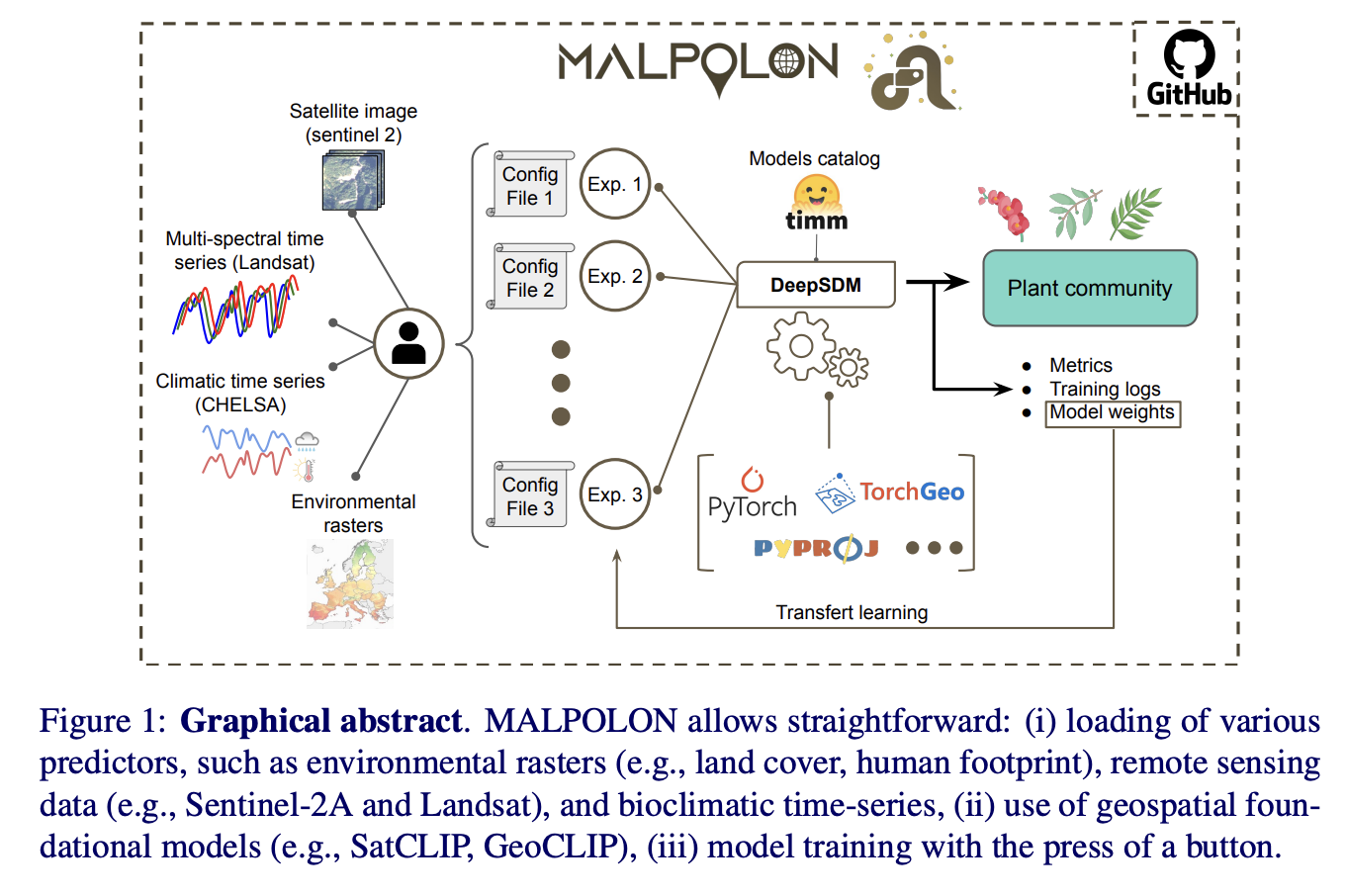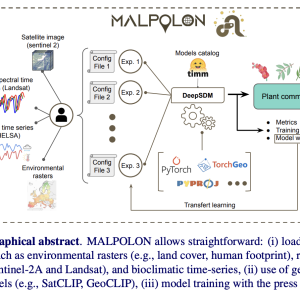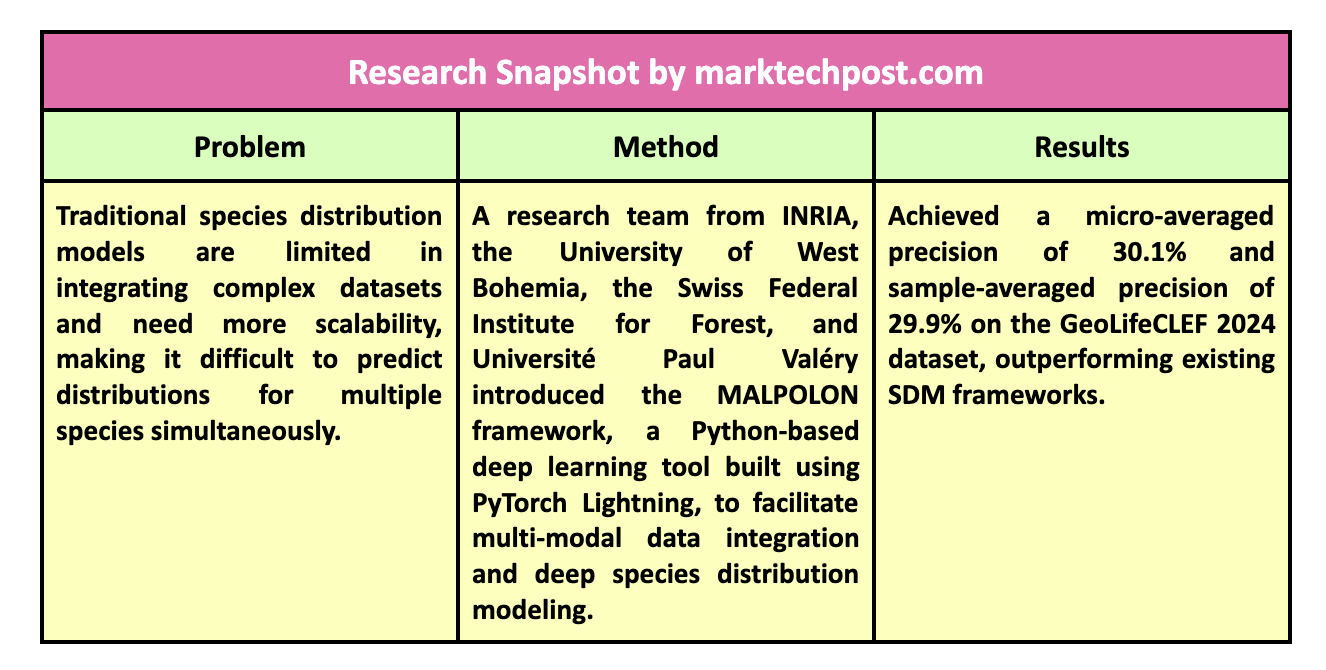

Species distribution modeling (SDM) has become an indispensable tool in ecological research, enabling scientists to predict species distribution patterns across geographic regions using environmental and observational data. These models help analyze the impact of environmental factors and human activities on species occurrence and abundance, providing insights critical to conservation strategies and biodiversity management. Over the years, SDMs have evolved from basic statistical methods to advanced machine-learning approaches that offer improved prediction accuracy and scalability. However, incorporating complex data types like remote sensing imagery and time series into traditional SDMs remains a significant challenge. Researchers have been actively seeking solutions to make SDMs more efficient and adaptable to large, diverse datasets, aiming to enhance the models’ ability to predict species distributions under changing environmental conditions.
Despite advancements, conventional SDMs still need to overcome numerous challenges, primarily due to their inability to effectively integrate complex and heterogeneous datasets. Traditional methods like Generalized Linear Models (GLM), Generalized Additive Models (GAM), and Maximum Entropy (MAXENT) are widely used but are inherently limited in their capacity to capture intricate ecological interactions. These methods often require substantial manual intervention for data preparation and parameter tuning, which becomes increasingly impractical when dealing with extensive datasets, such as multi-spectral satellite imagery or high-dimensional climatic variables. Furthermore, existing models typically focus on single-species predictions, necessitating multiple individual models when simultaneously predicting distributions for numerous species. This approach is computationally expensive and needs more scalability for large-scale ecological studies.
Researchers have started exploring deep learning methods to address these limitations, which can model complex relationships between various environmental predictors and species observations. Deep learning models, such as CNNs and Transformers, have shown promising results in capturing species distributions’ spatial and temporal variability. However, the adoption of deep learning for SDMs has been hindered by accessibility barriers, as it requires expertise in Python and access to GPU resources. Frameworks like sjSDM have integrated deep learning capabilities within the R programming environment but suffer from reduced efficiency and usability issues. Consequently, there has been a growing need for a framework that simplifies the integration of deep learning into SDMs while ensuring modularity and ease of use.
A research team from INRIA, the University of West Bohemia, the Swiss Federal Institute for Forest, and Université Paul Valéry developed the MALPOLON framework, a comprehensive Python-based deep species distribution modeling tool. This innovative framework, built using PyTorch and PyTorch Lightning, provides a seamless platform for training and inferring deep SDMs. MALPOLON’s design caters to novice and advanced users, offering a range of plug-and-play examples and a highly modular structure. It supports multi-modal data integration, allowing researchers to combine diverse data types such as satellite images, climatic time series, and environmental rasters to build robust predictive models. The framework’s modular architecture facilitates straightforward modification of its components, enabling users to easily customize data preprocessing, model structures, and training loops.
MALPOLON offers significant advantages in terms of performance and scalability. By leveraging PyTorch Lightning’s capabilities, it can perform distributed training across multiple GPUs, reducing computational time while maintaining high efficiency. The research team benchmarked MALPOLON against existing deep SDM frameworks using the GeoLifeCLEF 2024 dataset, which contains over 1.4 million observations of 11,000 species. The multimodal ensemble model (MME) achieved impressive metrics, including a micro-averaged precision of 30.1% and a sample-averaged precision of 29.9%. The model outperformed traditional methods and competing frameworks substantially, showcasing MALPOLON’s capability to effectively handle large, imbalanced datasets. Also, the framework integrates foundational models like GeoCLIP, enhancing its ability to generalize across multiple species and environmental contexts.
The extensive evaluation of MALPOLON highlighted its potential for transforming SDM practices. The framework simplifies the implementation of deep learning models and improves reproducibility and accessibility. It is distributed through GitHub and PyPi, making it readily available to the research community. Moreover, its compatibility with widely used geospatial libraries like TorchGeo further enhances its utility for ecological modeling. The modularity of MALPOLON allows for easy experimentation and customization, promoting its adoption for a range of applications, from species distribution modeling to habitat suitability analysis. The framework’s robust documentation and tutorials enable researchers to adapt MALPOLON to their specific use cases, making it a versatile tool for advancing ecological research.
Key Takeaways from the Research:
- The MALPOLON framework integrates deep learning with traditional SDMs, supporting complex datasets like satellite imagery and time series.
- It offers a micro-averaged precision of 30.1% and a sample-averaged precision of 29.9%, outperforming traditional models and frameworks.
- Modular design and compatibility with PyTorch Lightning allow for easy experimentation and customization.
- Supports multi-GPU computation and advanced architectures like CNNs and Transformers.
- It is open-sourced on GitHub and PyPi, enabling easy access and collaboration for the research community.

In conclusion, the MALPOLON framework offers a cutting-edge solution to the challenges faced in traditional species distribution modeling. Incorporating advanced deep learning techniques and providing a user-friendly platform bridges the gap between machine learning research and ecological modeling. MALPOLON’s performance on the GeoLifeCLEF 2024 dataset demonstrates its potential to enhance prediction accuracy while reducing computational requirements. Its integration with foundational models like GeoCLIP and SatCLIP further solidifies its position as a leading tool for multi-species and multi-modal SDM applications.
Check out the Paper and GitHub. All credit for this research goes to the researchers of this project. Also, don’t forget to follow us on Twitter and join our Telegram Channel and LinkedIn Group. If you like our work, you will love our newsletter..
Don’t Forget to join our 50k+ ML SubReddit
The post MALPOLON: A Cutting-Edge AI Framework Designed to Enhance Species Distribution Modeling Through the Integration of Geospatial Data and Deep Learning Models appeared first on MarkTechPost.